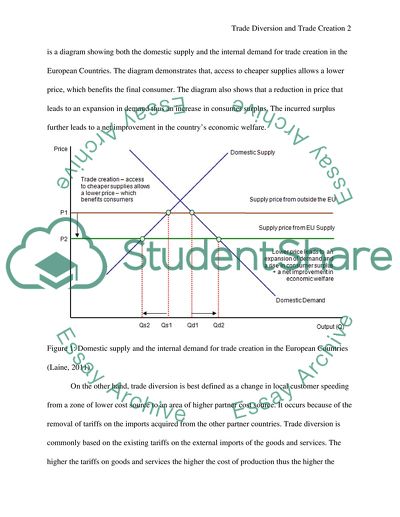Cite this document
(“Trade Diversion and Trade Creation Essay Example | Topics and Well Written Essays - 1750 words”, n.d.)
Trade Diversion and Trade Creation Essay Example | Topics and Well Written Essays - 1750 words. Retrieved from https://studentshare.org/macro-microeconomics/1683586-1-using-a-diagram-explain-the-concepts-of-trade-diversion-and-trade-creation-what-effects-drive-countries-to-seek-membership-to-a-trading-agreement
Trade Diversion and Trade Creation Essay Example | Topics and Well Written Essays - 1750 words. Retrieved from https://studentshare.org/macro-microeconomics/1683586-1-using-a-diagram-explain-the-concepts-of-trade-diversion-and-trade-creation-what-effects-drive-countries-to-seek-membership-to-a-trading-agreement
(Trade Diversion and Trade Creation Essay Example | Topics and Well Written Essays - 1750 Words)
Trade Diversion and Trade Creation Essay Example | Topics and Well Written Essays - 1750 Words. https://studentshare.org/macro-microeconomics/1683586-1-using-a-diagram-explain-the-concepts-of-trade-diversion-and-trade-creation-what-effects-drive-countries-to-seek-membership-to-a-trading-agreement.
Trade Diversion and Trade Creation Essay Example | Topics and Well Written Essays - 1750 Words. https://studentshare.org/macro-microeconomics/1683586-1-using-a-diagram-explain-the-concepts-of-trade-diversion-and-trade-creation-what-effects-drive-countries-to-seek-membership-to-a-trading-agreement.
“Trade Diversion and Trade Creation Essay Example | Topics and Well Written Essays - 1750 Words”, n.d. https://studentshare.org/macro-microeconomics/1683586-1-using-a-diagram-explain-the-concepts-of-trade-diversion-and-trade-creation-what-effects-drive-countries-to-seek-membership-to-a-trading-agreement.


